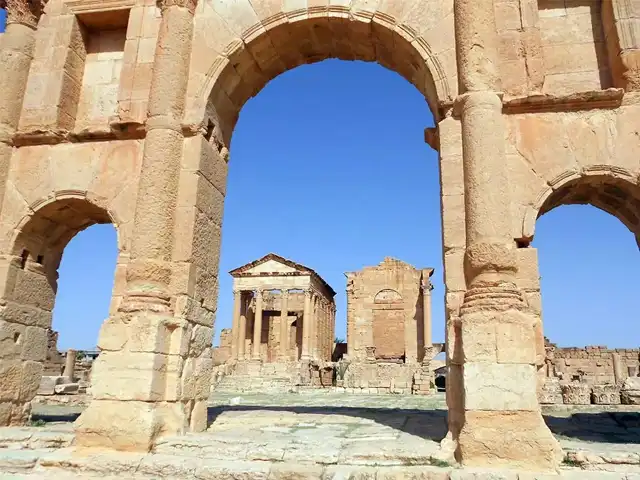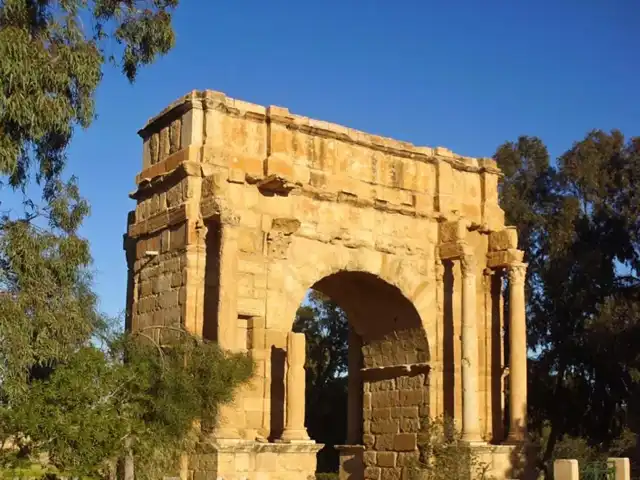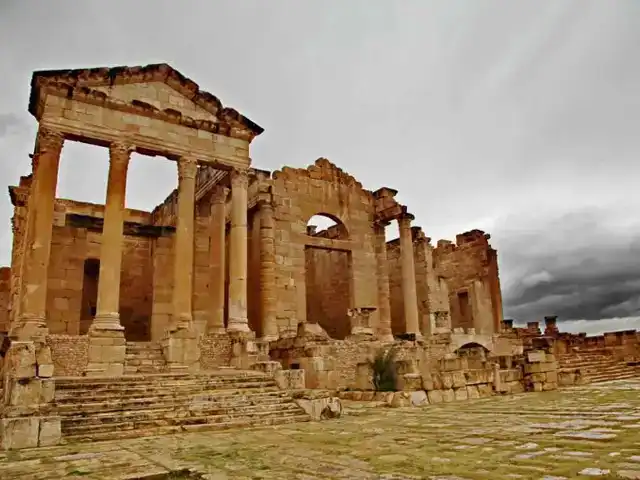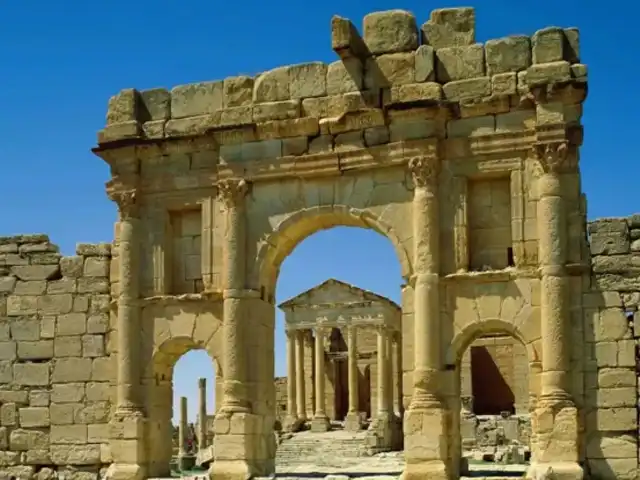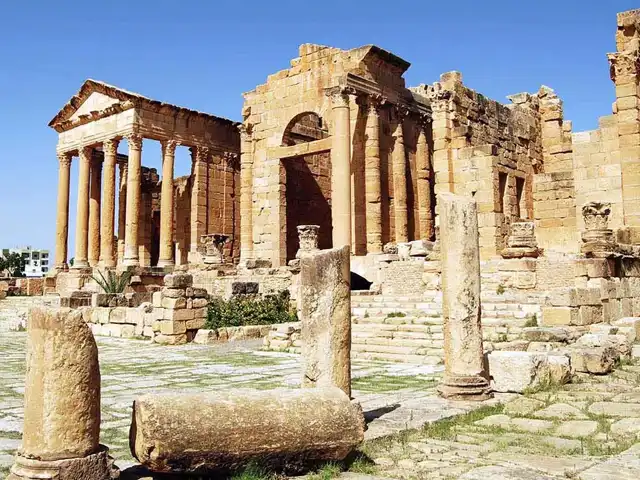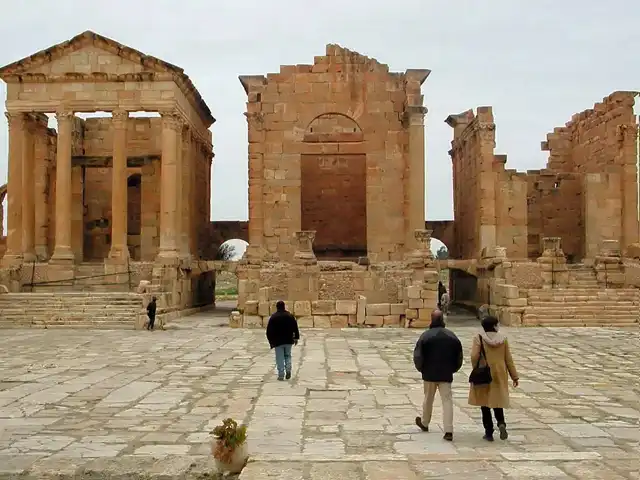Sbeitla Archaeological Site
Even if the toponym Sufetula indicates a much earlier foundation, the remains unearthed on the site do not date back any earlier than the 1st century AD.
The city seems to have experienced under Septimius Severus (2nd – 3rd century) an era of great prosperity which continued until under Diocletian (285 – 305). It is from this period that the main buildings still visible date: houses, forum, temples, baths, triumphal gate, theater, etc.
In the absence of inscriptions to inform us about the different stages of the city’s past, the discovery of late vestiges, from the Lower Empire or from the Vandal and Byzantine periods, reflects the great vitality of the Christian community within these walls, which became preponderant on the eve of the Arab conquest, in 647, which put an end to Africa’s membership of the Christian world and signed its attachment to the Islamic empire, after the defeat of Patrice Grégoire who reigned over a kingdom which had taken its distances from Constantinople and which had Sufetula as its capital instead of Carthage.
The Sufetula site is the first to have been equipped with dynamic lighting and complete signage.
Situation
Center
To See
site
museum
Opening Hours :
From 16/09 to 31/05:08.00-17.30
From 01/06 to 15/09:08.00-19.00
Ramadan Schedule
8:00-17:00
Entrance fees
8 TND
Remarks
The museum is closed on Mondays
Amenities
Bathroom
Shop
Cafeteria
Sbeitla Archaeological Site in Pictures
